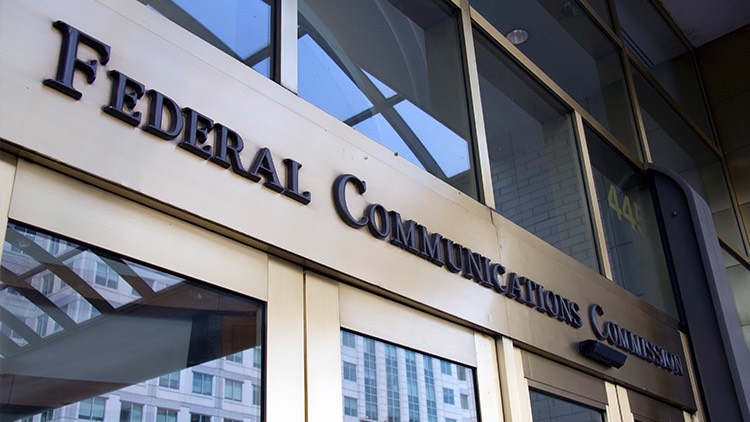FCC Unanimously Approves ATSC 3.0 Rollout Proposal

The FCC voted unanimously Thursday to approve a Notice of Proposed Rulemaking to allow broadcasters to roll out the ATSC 3.0 transmission standard on a voluntary, market-driven basis.
The NPRM asks a lot of questions and will still need to be commented on and a final order voted, likely months down the road, but it marks the beginning of broadcasters' move to a standard that supports interactivity, 4K resolution, and data services that will boost their profile in the digital age.
Broadcasters must simulcast in both the current and 3.0 ATSC formats during the rollout.
MVPDs must continue to carry ATSC signals but not the new 3.0 signals. It seeks comment on the conclusion that a tuner mandate is not yet needed for TV receivers.
FCC chairman Ajit Pai asked his audience to imagine a world with broadcasters delivering in ultra-high definition and immersive audio, hyper-localized niche content, better accessibility for the disabled, smart phones as OTA devices, and a "far more advanced" emergency alert system. He said that world need not be imaginary with ATSC 3.0.
Pai said TV broadcasting remains an "indispensable" part of the landscape, still claiming the biggest audiences.
He pointed to the 110 million people who watched the Super Bowl on Fox (saying that people were still wondering why the Atlanta Falcons did not run three times at the 22-yard line).
Broadcasting & Cable Newsletter
The smarter way to stay on top of broadcasting and cable industry. Sign up below
He said the FCC was seeking input on the impact of the rollout on cable, satellite and broadcasters. He said he wanted to minimize disruption on consumers, which is why the FCC was allowing for one station to broadcast the ATSC signal of a station who is transmitting its programming in ATSC 3.0.
The chairman said he was hoping to have a final order by the end of the year "so that American broadcasters can deliver to our nation's citizens even more of the marvels of the digital age."
Commissioner Michael O'Rielly said the FCC was "opening the door to innovation," including more personalized entertainment for broadcasters and said he hoped a final order would be ready by Halloween.
He said the item makes clear that use of the new standard is "completely voluntary." He also said he wanted to leave as much flexibility as possible for the new standard. He said any suggestions for mandates on the transition would be premature.
Democratic commissioner Mignon Clyburn said she still had issues with the proposal. She pointed out that there would be no government coupon program—the DTV transition's converter-box program.
She also was concerned about the future of multicast subchannels and the survival of HD broadcasts in ATSC 1.0 simulcasts.
She said the NPRM fails to give consumers assurances of the maintenance of ATSC 1.0 given that there might be stations that don't want to make the switch or can't afford it. She also said she did not want MVPDs disadvantaged if they don't want to carry the ASTC 3.0 transmissions.
Clyburn said there must be a robust consumer education program. "Quite frankly, I still have many questions and many concerns remain," she said, but also said she was voting to move the process forward.
"We’re delighted that the Commission has begun the formal process of approving use of this revolutionary capacity for broadcasters with the significant commitment of Chairman Pai to move quickly to final rules," said Jerald Fritz, executive VP of One Media, the Sinclair spin-off company pushing for the advanced standard (Sinclair was a pioneer in pushing for an advanced, mobile, broadcast transmission standard). "The opportunities opened are immense, and we’d like to begin providing these enhanced services to our viewers as quickly as possible. The convergence of Next Gen deployment and the broadcast station repack marks both a practical and strategic relaunch of the broadcast business model.”
"NAB commends the FCC and Chairman Pai for taking the first step towards approving the voluntary adoption of Next Gen TV," said National Association of Broadcasters spokesman Dennis Wharton. "This innovative broadcast transmission standard offers free and local TV viewers the promise of higher-quality pictures and sound, mobile viewership, datacasting and lifesaving interactive emergency information. With support from television manufacturers, public TV stations and the public safety community, NAB looks forward to Next Gen TV’s giant leap into broadcasting’s bright future."
“We applaud the Commission’s balanced and deliberate NPRM," said Trent Duffy, a spokesman for the American Television Alliance, whose members include cable and satellite MPVDs. "We believe it will provide for a robust discussion of the critical issues and help ensure that the proposed transition benefits all broadcast television viewers regardless of whether they receive those signals over the air or from a pay TV provider."
Contributing editor John Eggerton has been an editor and/or writer on media regulation, legislation and policy for over four decades, including covering the FCC, FTC, Congress, the major media trade associations, and the federal courts. In addition to Multichannel News and Broadcasting + Cable, his work has appeared in Radio World, TV Technology, TV Fax, This Week in Consumer Electronics, Variety and the Encyclopedia Britannica.

